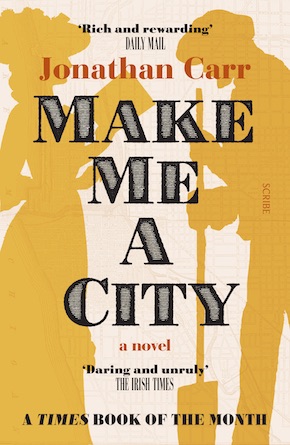Settlers and shenanigans
by Jonathan CarrThe nineteenth century was the century of cities. Across the planet, their number and size mushroomed in the biggest urban expansion in history. London’s population grew between 1800 and 1900 from one million to seven million, making it far and away the largest city in the world. Even so, it was in the USA where the changes wrought by urbanisation were the most dramatic of all. Over that same hundred years, the American population, boosted by widespread immigration, grew from 5 million to 76 million, 40% of whom lived in cities. In 1800, only a handful of those cities existed, the biggest of which was New York. Although it’s true that New York would retain that title, the most fabulous American story of the 19th century actually belongs to the second biggest city in the nation, a rowdy upstart on the shores of Lake Michigan.
In 1800, Chicago comprised a single farm and trading post, built and managed by a man of mixed descent – French and, probably, African. Jean Baptiste Pointe de Sable had chosen to establish himself in a swampy, mosquito-infested location through which the Potawatomies would pass as they travelled between their summer and winter hunting grounds. Hardly promising terrain for a city. By the early 1830s, there were only a few hundred residents. Yet by the end of the century, Chicago had become home to almost two million people.
I was lucky enough to be introduced to Chicago at a young age by a friend who inspired in me a love for his city and its history. It was thanks to his encouragement that, many years ago, I first toyed with the idea of writing a novel that would put 19th-century Chicago – from frontier trading post to industrial metropolis – at its centre. It’s just as well that plenty of time would pass before I finally acted on the idea because, in the interim, the digitalisation of information had opened up a plethora of new resources. I often wonder, if I had gone ahead with Make Me a City when I first thought of attempting to write it, how the novel would have opened. Of one thing I am quite certain, it would not have started as it does now.
History textbooks were, obviously, an indispensable source of information. They provided headline answers about what fuelled Chicago’s exponential growth and furnished useful detail about the city’s leading businessmen and politicians. But they also tended to consign some colourful-sounding characters to the footnotes. These were often individuals about whose stories I wished I could learn more. There were other people too – immigrants in particular – who seemed to have vanished from the historical record, leaving barely a trace behind. These were important people, people without whose expertise and labour Chicago’s canals, railroads, factories and skyscrapers would never have been built.
Online access to copies of obscure local newspapers, photographs, out-of-print books, journals, letters and biographies, can make research a challenge that’s one more of selection than discovery.”
It was in the search for documents to help me learn about some of those neglected Chicagoans where the digitalisation process would turn out to be so helpful. Today – and it’s of particular importance where the nineteenth century is concerned – the ability to gain online access to copies of obscure local newspapers, photographs, out-of-print books, journals, letters and biographies, can make research a challenge that’s one more of selection than discovery. This ‘new’ old data represented an incalculable bonanza for me, informing and shaping the novel that Make Me a City would become. There are two key characters, for example, who would probably not have been included without it.
The first of them is John Wright, a serial entrepreneur and one of Chicago’s most prolific and entertaining boosters. If he receives any mention in a history textbook, it will be brief. The starting point for me was a previously out-of-print 1941 biography – John S. Wright: Prophet of the Prairies – by Lloyd Lewis, a notable Chicago journalist and historian of his day. The biography threw up useful leads that could be pursued online and, by the end of this process, I had formed a pretty good idea of who John Wright was. And I had become convinced that he was one of the most important figures in 19th-century Chicago.
For instance, he did as much – maybe more – than anyone else to bring the railroads to Chicago; he was instrumental in revolutionising the nation’s agricultural practices through the manufacture of a machine that collected grain; he founded and edited The Prairie Farmer, a crucial informational resource for the nation’s growers. The Prairie Farmer, incidentally, is still in print today and is the oldest continuously published magazine in America.
Why, then, didn’t Wright receive due recognition from historians? Because he was, I suspect, an embarrassment both to his contemporaries and to those who came after him, a man who – for all his accomplishments – was also renowned for his antics, failures and tragic flaws. These characteristics may not make for congenial company or uplifting history but they’re exactly what a novelist is interested in.
There seems little doubt that it was racism, not embarrassment, that led to the historical sidelining of the other character who would probably have failed to make it into the novel. I was able to learn about Pointe de Sable, the first settler, thanks to the availability of another previously out-of-print book published in 1913 by historian Milo M. Quaife, entitled Checagou from Indian Wigwam to Modern City, 1673–1835. Quaife rails against his fellow Chicagoans for regarding Pointe de Sable “with feelings mingled of levity and contempt”. Instead, he hails Pointe de Sable as “a true pioneer of civilisation, leader of the unending procession of Chicago’s swarming millions. Even in his mixed blood he truly represented the future city, for where else on earth is a greater conglomeration of races and breeds assembled together? His story is one with that of early Chicago.”
That single document would take me deeper into what seemed to be some skulduggery regarding Pointe de Sable’s hasty departure from Chicago. I would uncover extortion, murder and the perpetuation of falsehoods.”
My search for more information about Pointe de Sable was to be rewarded online by one more gem. It puzzled me that after building up a very successful operation at Chicago over nearly twenty years, he sold up in 1800 for no obvious reason and moved to St Charles, Missouri where he lived out the rest of his life in relative penury. Why would he have chosen to do that?
The original bill of sale, the very first property transaction in Chicago’s history, is held in a library in Detroit. In the years when it would have been necessary to visit Detroit in person to track down that handwritten record, would I have gone? I doubt it. Now, after finding a copy of the document online, I was able to see what a significant – and what a suspect – transaction it was.
That single document would take me deeper into what seemed to be some skulduggery regarding Pointe de Sable’s hasty departure from Chicago. I would be able to uncover extortion, murder and the perpetuation of falsehoods concerning the origins of the city. In fact, I had all the elements I needed for the beginning of Make Me a City.
 Jonathan Carr has worked as a travel correspondent, a book reviewer and a teacher of English. In between periods spent living in the UK, Kenya, Gambia, Greece and Louisiana, he first visited Chicago in 1983. He currently lives in Bologna. A graduate of Cambridge University, he holds a PhD from Bath Spa University in Creative Writing. Make Me a City, his first novel, is out now in paperback from Scribe.
Jonathan Carr has worked as a travel correspondent, a book reviewer and a teacher of English. In between periods spent living in the UK, Kenya, Gambia, Greece and Louisiana, he first visited Chicago in 1983. He currently lives in Bologna. A graduate of Cambridge University, he holds a PhD from Bath Spa University in Creative Writing. Make Me a City, his first novel, is out now in paperback from Scribe.
Read more
jonathancarr.me
@JHGCarr
@ScribeUKbooks
Author portrait © Zute Lightfoot


